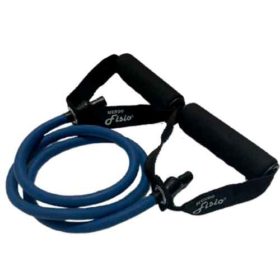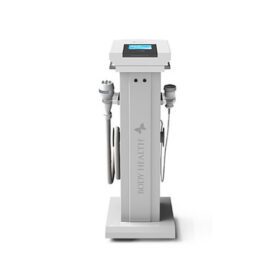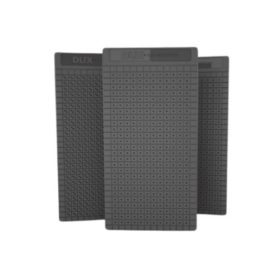Encontre o que precisa com preço baixo, pagamento facilitado no Cartão, Pix ou Bitcoin | Financie em até 48x | (62) 3999-1263 - (62) 99497-9204
Mastering Micro-Adjustments for Personalized Content Optimization: A Practical Deep-Dive
Implementing micro-adjustments in content personalization is a nuanced process that demands technical precision and strategic insight. While broader personalization strategies set the stage, the real engagement boost comes from fine-tuning user experiences based on granular behavioral signals. This article offers an expert-level, step-by-step guide to deploying, refining, and scaling micro-adjustments that truly resonate with individual users, backed by concrete techniques, real-world examples, and troubleshooting tips.
Table of Contents
- Understanding the Foundations of Micro-Adjustments in Content Personalization
- Analyzing User Behavior for Precise Micro-Adjustments
- Technical Implementation of Micro-Adjustments
- Practical Techniques for Fine-Tuning Content at the Micro Level
- Case Studies: Step-by-Step Application of Micro-Adjustments
- Common Pitfalls and Best Practices in Implementing Micro-Adjustments
- Scaling Micro-Adjustments Across Large User Bases
- Reinforcing the Value of Precise Micro-Adjustments and Connecting to Broader Personalization Goals
1. Understanding the Foundations of Micro-Adjustments in Content Personalization
a) Clarifying the Role of Micro-Adjustments in User Experience Optimization
Micro-adjustments serve as the fine-tuning mechanism within a broader personalization strategy. Unlike macro adjustments—such as redesigning entire layouts or radically changing content themes—micro-adjustments tweak specific elements like CTA wording, content order, or visual emphasis based on real-time user signals. Their role is crucial in enhancing engagement, reducing bounce rates, and increasing conversions by tailoring the experience to subtle individual preferences.
b) Differentiating Between Macro and Micro-Adjustments: When and Why to Use Them
Understanding when to employ macro versus micro adjustments is fundamental. Macro changes are appropriate during strategic redesigns, major content overhauls, or when targeting new user segments. Micro-adjustments, however, should be used continuously and dynamically, responding to behavioral signals such as a user’s recent clicks, scrolling habits, or session duration. For example, dynamically shifting a product recommendation based on a user’s last 3-minute browsing window exemplifies micro-tuning.
c) Key Metrics and Data Points to Inform Micro-Adjustments
Precise micro-adjustments rely on granular data. Critical metrics include:
| Data Point | Use Case |
|---|---|
| Click-through rate (CTR) | Identifies which elements attract attention, guiding layout and wording adjustments |
| Scroll depth | Reveals content engagement, prompting modifications in content prominence |
| Time on page/session duration | Indicates content relevance, informing personalization of suggested content |
| Behavioral segments | Allows targeted micro-tuning based on user type (new vs returning, device, location) |
2. Analyzing User Behavior for Precise Micro-Adjustments
a) Collecting and Interpreting Behavioral Data (clicks, scrolls, time-on-page)
Implement advanced event tracking using tools like Google Analytics 4, Mixpanel, or custom JavaScript snippets. For example, embed event listeners that capture:
- Click events on specific elements (buttons, links)
- Scroll depth percentages (25%, 50%, 75%, 100%)
- Time spent on critical sections
Use these data points to construct detailed user interaction profiles. For instance, if a user consistently abandons a page after scrolling halfway, consider micro-adjustments like repositioning the CTA higher or changing its wording to prompt action earlier.
b) Segmenting Users for Targeted Micro-Adjustments (new vs. returning, device type, location)
Implement segmentation layers within your analytics platform. Use cookies, IP geolocation, device fingerprinting, or login data to define segments. For example:
- New users: Show introductory offers or simplified content layouts.
- Returning users: Prioritize personalized content based on previous interactions.
- Mobile users: Optimize layout for touch interactions, adjust CTA size.
- Users in specific locations: Offer region-specific deals or content.
Combine multiple segments to create granular micro-tuning rules. For example, personalize product recommendations differently for returning mobile users from urban areas.
c) Using Heatmaps and Session Recordings to Identify Fine-Grained Interaction Patterns
Deploy tools like Hotjar, Crazy Egg, or FullStory to visualize how users interact with your pages. Focus on:
- Click patterns indicating preferred elements
- Scroll trajectories revealing content engagement zones
- Session replays to observe micro-movements and hesitations
Analyze these insights to identify subtle friction points or highly engaged zones, then implement micro-tweaks like repositioning key content blocks or adjusting visual cues for better flow.
3. Technical Implementation of Micro-Adjustments
a) Setting Up Real-Time Data Processing Pipelines (e.g., using Kafka, WebSocket)
To enable instant micro-adjustments, establish a real-time data ingestion pipeline. For example:
- Data collection: Use JavaScript event listeners to push user interactions via WebSocket or REST API to your backend.
- Stream processing: Employ Apache Kafka or AWS Kinesis to handle ingestion at scale, enabling low-latency processing.
- Data storage: Store processed signals in fast-access databases like Redis or DynamoDB for immediate retrieval.
Pro tip: Ensure your pipeline is optimized for latency—aim for sub-200ms round-trip times—to keep micro-adjustments seamless and imperceptible to users.
b) Developing Conditional Logic for Dynamic Content Changes (if-then rules, machine learning models)
Create a rule engine that evaluates incoming data points and triggers content modifications. Techniques include:
- If-then rules: e.g., if scroll depth > 75% and time on page < 2 minutes, then display a pop-up CTA.
- Machine learning models: Train classifiers (e.g., Random Forest, Gradient Boosting) on historical interaction data to predict optimal content variations.
- Contextual bandits: Use reinforcement learning techniques to select content variants that maximize engagement based on ongoing feedback.
Tip: Start with simple rule-based systems for rapid deployment, then evolve toward ML models as data volume and complexity justify.
c) Integrating Micro-Adjustments with Content Management Systems (CMS) and Personalization Engines
Seamless integration is vital for real-time micro-tuning. Strategies include:
- API-driven content delivery: Extend your CMS with RESTful APIs that accept dynamic parameters to modify content snippets on the fly.
- Headless CMS architectures: Use APIs to serve content that can be adjusted based on real-time signals, facilitating micro-personalization.
- Personalization engines: Leverage platforms like Adobe Target, Dynamic Yield, or Optimizely, which support rule-based or ML-driven real-time content adjustments.
Pro tip: Maintain a modular architecture where content modules can be quickly swapped or styled based on user-specific signals, minimizing latency.
4. Practical Techniques for Fine-Tuning Content at the Micro Level
a) Adjusting Content Layouts Based on User Engagement Signals
Implement dynamic layout adjustments such as:
- Reordering content blocks: Use JavaScript to reorder elements if heatmap data indicates certain sections are more engaging.
- Resizing elements: Increase the size of high-CTR buttons or emphasize key messages based on interaction patterns.
- Changing visibility: Hide or reveal sections for specific segments to streamline user flow.
Example: If a user scrolls past a product image but not the description, dynamically reposition the “Add to Cart” button closer to the viewport.
b) Personalizing Call-to-Action (CTA) Placement, Wording, and Visuals in Response to User Context
Micro-tuning CTAs involves:
- Placement: Move CTA buttons near highly engaged content zones identified via heatmaps.
- Wording: Use A/B testing data to dynamically replace CTA text, e.g., “Get Your Discount” vs. “Claim Your Savings,” based on user sentiment.
- Visuals: Adjust colors or animations to match user preferences or contrast requirements for better visibility.
Pro tip: Implement a real-time copy variant selector that swaps CTA text based on recent search queries or browsing history.
c) Modifying Content Recommendations Based on Subtle User Preferences (e.g., recent searches, browsing patterns)
Leverage machine learning models trained on user activity logs to rank content dynamically. For example:
- Update recommendation sliders in real-time to prioritize content matching recent searches.
- Adjust content filtering algorithms to surface articles or products aligning with browsing sequences.
- Use collaborative filtering combined with behavioral signals for more accurate micro-personalization.
Advanced tip: Incorporate subtle cues like recent hover data to refine content suggestions without overwhelming the user.
5. Case Studies: Step-by-Step Application of Micro-Adjustments
a) E-Commerce Site: Dynamic Product Recommendations Based on Minute Browsing Behaviors
A fashion retailer integrated real-time tracking of user interactions with product pages. Using WebSocket pipelines, they captured click and scroll data. When a user lingered on casual wear but ignored accessories, the system dynamically adjusted the recommendation widget to prioritize shoes and apparel, repositioned the CTA “Shop Now” closer to the products viewed, and personalized the wording to “Complete Your Look.” This micro-tuning increased add-to-cart rates by 12% within two weeks.




